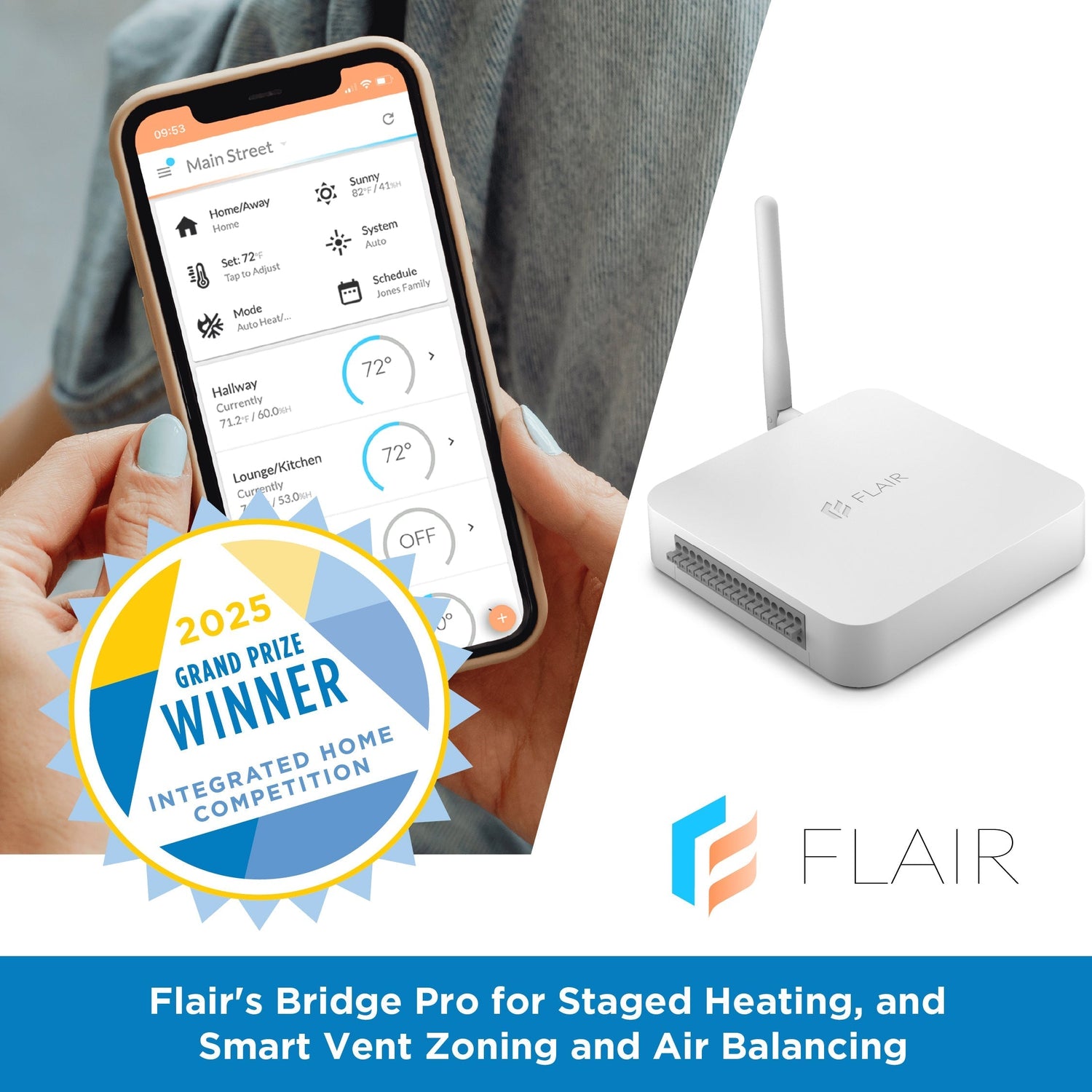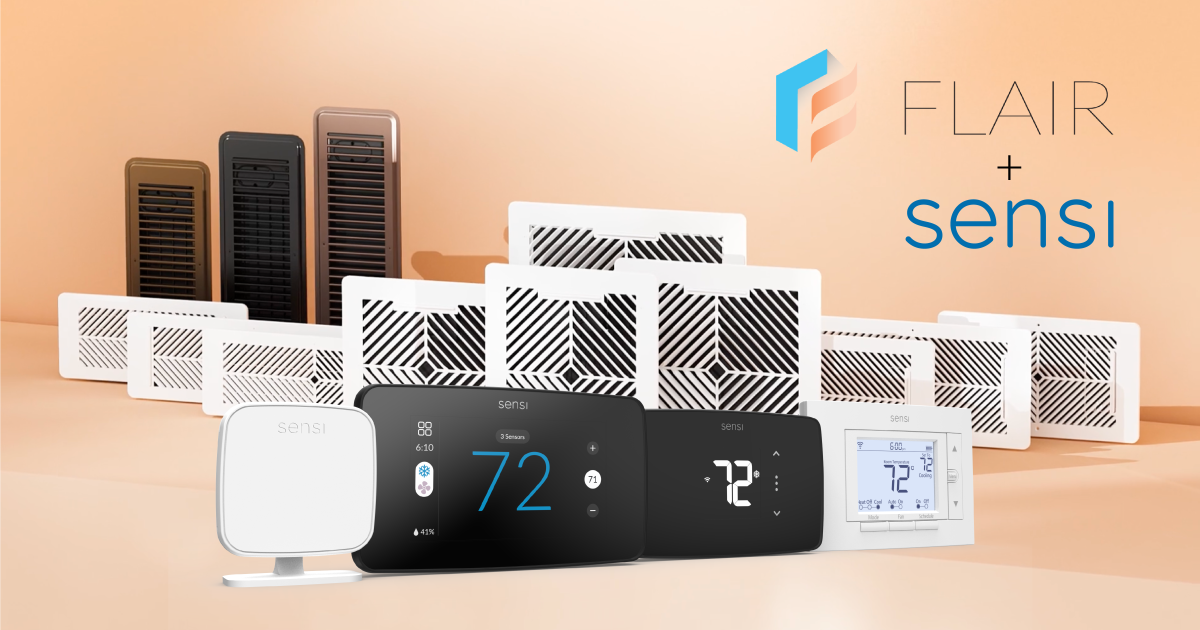In the last blog post, we told you about building smart vents and thermostats inclusively, affordably, and interoperably. The next thing to share is where we are and how we got here.
In the Beginning
Flair unofficially started in the polar vortex of early 2014. Dan was living in Chicago at the time and his upstairs was hot and downstairs was cold, a pretty common problem in most multi-floor buildings. To fix this, he was adjusting vents regularly, which helped make his place more comfortable, but got rather tedious day in and day out.
There was an article in one of the local Chicago papers that mentioned 3D printers being available at the downtown library. Dan designed a rough solution in CAD in a couple days and got a library card!
It was only a couple of days before we had a 3D printed prototype. Around the same time, Dan called up Kenny, a software developer at Microsoft at the time, and told him what he was working on. Kenny thought it would be fun to design the control circuits for the project and they both collaborated on a simple user interface hosted on a raspberry pi. Flair v0 was born!
But the design was a radically different approach—definitely over-optimized for installation—but still entertaining to look back upon. We built a smart vent cover that magnetically attached to regular vents. This video shows it in action:
Taking the Plunge
After looking around and realizing there was nothing in the market at that time, we decided it was time to "jump ship" and dive into Flair full time. This happened during the summer of 2014. We picked up and moved to the Bay Area knowing that it would give us the best shot at getting our idea off the ground. For the remainder of 2014, we built about 40 more prototypes, leading to some conclusions that informed our product design. One of the most important was that measuring temperature at the vent was not possible and that users wanted more than an open/close interaction model. And while we didn't know it at the time, this would lead us to building the Puck.
After deploying units and collecting test data, we decided to join Haxlr8r (now Hax) in Shenzhen, China for four months. Kenny is originally from Singapore and with a month of practice was able to get his Mandarin and Cantonese skills going. Not long after, we were eating dimsum and cruising electronics markets in Huaqiangbei. The best description we have heard to date of Huaqiangbei is "Candyland for Makers."
Being in Shenzhen allowed us to iterate quickly. Dan worked hard on mechanical design while Kenny was spinning new PCBs (printed circuit boards) every other day. We also spent time touring factories and brushing up on our DFM (design for manufacturing) skills, particularly around plastic forming and metal stamping. At the end of Hax we had our Smart Vent (including multiple sizes) designed, and a clearer picture of our Puck.
After another few months, we finished up the mechanical and electrical designs for the Puck and started looking for factories. We found a fantastic CM (contract manufacturer) and began the process of turning our designs and prototypes into mass manufacturable goods.
Tooling
If you have ever made more than 20 of something, you can appreciate how much goes into making the process of making easy. For manufacturing, this process usually involves creating "tools." These tools are typically giant steel blocks used to form plastic and metal parts. Below is a picture of one of the tools for stamping our 4x10 vent's front plate:

Every plastic, metal, silicon, etc. piece needs a tool because it allows for rapid part generation (each part can be created in seconds after tooling). For hardware startups, tooling is one of the most critical milestones. Once tools are done, it becomes cost effective to build the product. Before tooling, you might have to spend hundreds or thousands to produce a single unit. But tooling is also not something to rush into: they are literally set in stone so once designed, they can't be substantially changed. That and they are incredibly expensive upfront costs so getting them wrong can mean months of delays and incredible dollar amounts—a few extra rounds of prototyping can go far to make sure tooling goes smoothly.
After tooling comes rigorous testing: radio certification, firmware, radio performance, power, and other processes (even testing specific tools) to make sure that units leave the factory in perfect working order.
Then there are things that people often forget but are hugely important, like packaging. After deciding on a box type, you need to know exact dimensions ('die lines') and then design artwork to fit. Here is the side of a 4x10 Vent box:

And we haven't really talked about software, yet. Consumers want beautiful yet powerful digital experiences as well. In an upcoming blog post, we will take a deep dive on the software side of things. Everything from mobile vs desktop, APIs and interconnectivity and firmware on devices.
In the meantime, get excited! Flair is going to be shipping soon!




